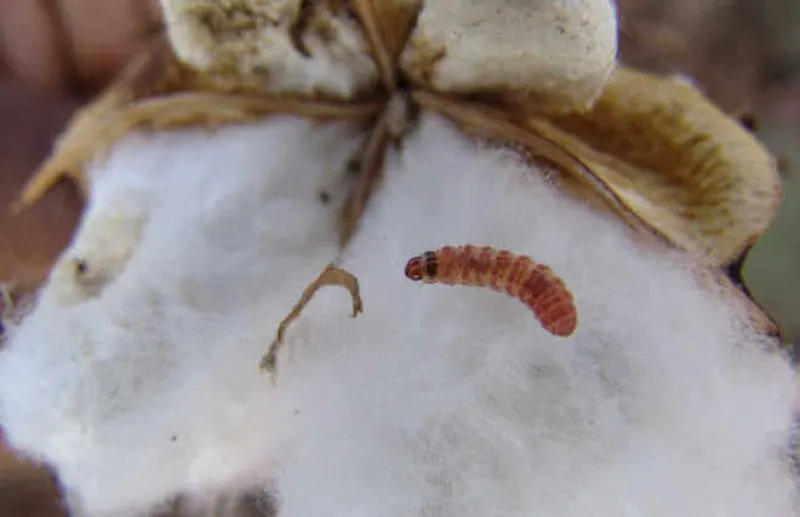Genetically modified Bt cotton helped eradicate pink bollworm — and saved US farmers $200 million over five years. Now, scientists and farmers are deploying technology to target other pests
Genetically modified Bt cotton helped eradicate pink bollworm — and saved US farmers $200 million over five years. Now, scientists and farmers are deploying technology to target other pests


A recent study from the University of Arizona shows that farmers were able to eradicate [pink bollworm] with the help of a coordinated, multifaceted program across the Southwest and northern Mexico among university, federal and state scientists, individual cotton growers and the cotton industry.
The U.S. Department of Agriculture declared that the pink bollworm was eradicated in the United States in October 2018, but lead study author Bruce Tabashnik said the last pink bollworm was found in Arizona in 2012 and effectively eliminated in the state by 2013, a feat he initially didn’t think would be possible.
Genetically modified crops are not a silver bullet, he said, and over-relying on them can quickly cause problems with insect resistance.
“By itself, the Bt crop is generally not going to allow eradication, so you need to combine it with other tactics,” he explained. “The combination of Bt cotton and sterile moth releases is a marriage made in heaven … it works much better than you’d expect.”
Now, [USDA research entomologist Jeff] Fabrick said he hopes the success of this method could be applied against other types of insects or against pink bollworms in other areas of the world, such as China, though he acknowledged that the right conditions are needed for success.
Read the original post

 | Videos | More... |

Video: Nuclear energy will destroy us? Global warming is an existential threat? Chemicals are massacring bees? Donate to the Green Industrial Complex!
 | Bees & Pollinators | More... |

GLP podcast: Science journalism is a mess. Here’s how to fix it

Mosquito massacre: Can we safely tackle malaria with a CRISPR gene drive?

Are we facing an ‘Insect Apocalypse’ caused by ‘intensive, industrial’ farming and agricultural chemicals? The media say yes; Science says ‘no’
 | Infographics | More... |

Infographic: Global regulatory and health research agencies on whether glyphosate causes cancer
 | GMO FAQs | More... |

Why is there controversy over GMO foods but not GMO drugs?

How are GMOs labeled around the world?

How does genetic engineering differ from conventional breeding?
 | GLP Profiles | More... |

Alex Jones: Right-wing conspiracy theorist stokes fear of GMOs, pesticides to sell ‘health supplements’




 Trust issues: What happens when therapists use ChatGPT?
Trust issues: What happens when therapists use ChatGPT? Fighting deforestation with CO2: Biotechnology breakthrough creates sustainable palm oil alternative for cosmetics
Fighting deforestation with CO2: Biotechnology breakthrough creates sustainable palm oil alternative for cosmetics Viewpoint: Video — Big Solar is gobbling up productive agricultural land and hurting farmers yet providing little energy or sustainabilty gains
Viewpoint: Video — Big Solar is gobbling up productive agricultural land and hurting farmers yet providing little energy or sustainabilty gains California, Washington, Oregon forge immunization alliance to safeguard vaccine access against federal undermining
California, Washington, Oregon forge immunization alliance to safeguard vaccine access against federal undermining Viewpoint — Fact checking MAHA mythmakers: How wellness influencers and RFK, Jr. undermine American science and health
Viewpoint — Fact checking MAHA mythmakers: How wellness influencers and RFK, Jr. undermine American science and health 30-year-old tomato line shows genetic resistance to devastating virus
30-year-old tomato line shows genetic resistance to devastating virus The free-range chicken dilemma: Better for birds, but with substantial costs
The free-range chicken dilemma: Better for birds, but with substantial costs ‘You have to treat the brain first’: Rethinking chronic pain with Sanjay Gupta
‘You have to treat the brain first’: Rethinking chronic pain with Sanjay Gupta
